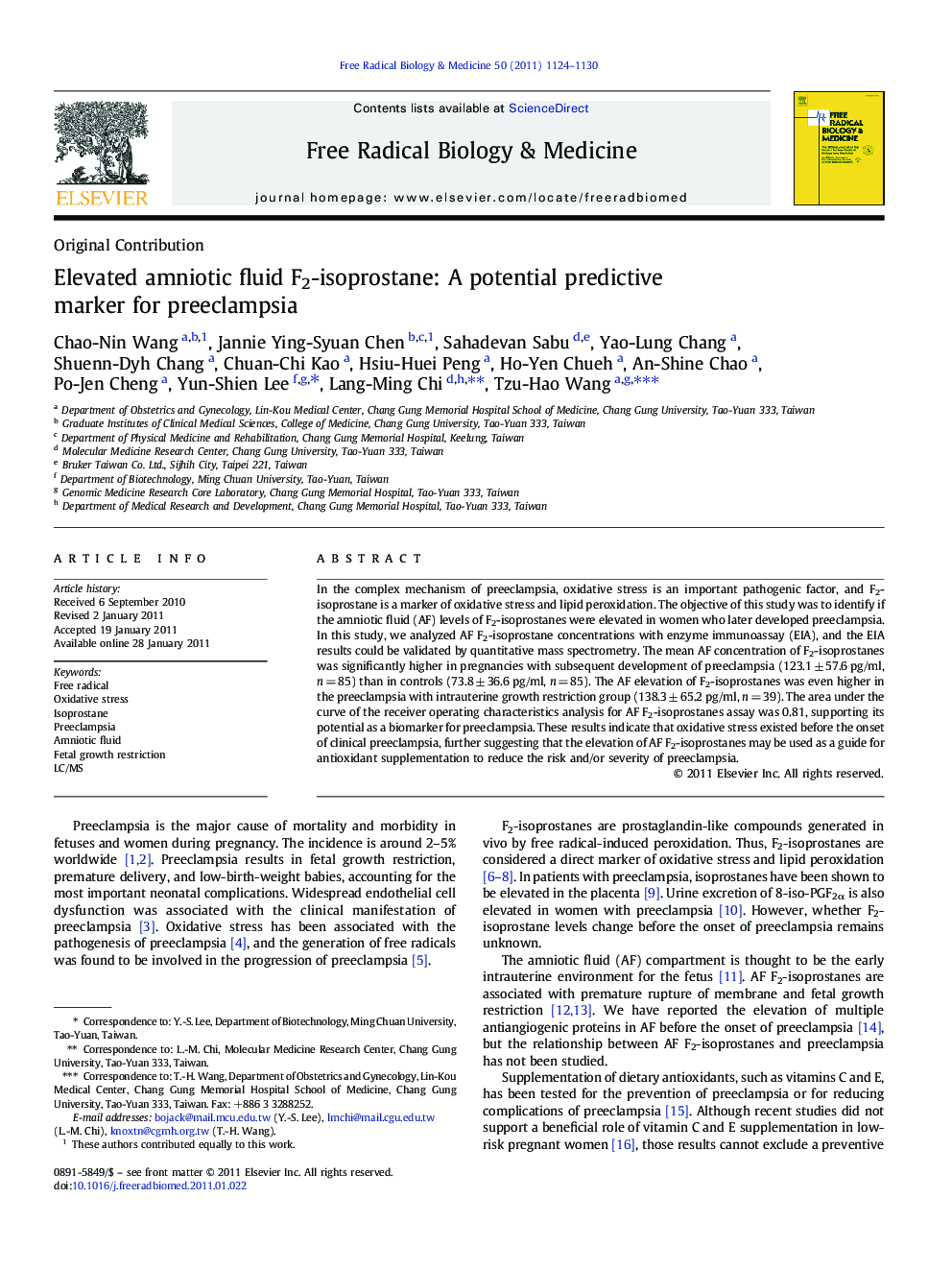| Article ID | Journal | Published Year | Pages | File Type |
|---|---|---|---|---|
| 10738430 | Free Radical Biology and Medicine | 2011 | 7 Pages |
Abstract
In the complex mechanism of preeclampsia, oxidative stress is an important pathogenic factor, and F2-isoprostane is a marker of oxidative stress and lipid peroxidation. The objective of this study was to identify if the amniotic fluid (AF) levels of F2-isoprostanes were elevated in women who later developed preeclampsia. In this study, we analyzed AF F2-isoprostane concentrations with enzyme immunoassay (EIA), and the EIA results could be validated by quantitative mass spectrometry. The mean AF concentration of F2-isoprostanes was significantly higher in pregnancies with subsequent development of preeclampsia (123.1 ± 57.6 pg/ml, n = 85) than in controls (73.8 ± 36.6 pg/ml, n = 85). The AF elevation of F2-isoprostanes was even higher in the preeclampsia with intrauterine growth restriction group (138.3 ± 65.2 pg/ml, n = 39). The area under the curve of the receiver operating characteristics analysis for AF F2-isoprostanes assay was 0.81, supporting its potential as a biomarker for preeclampsia. These results indicate that oxidative stress existed before the onset of clinical preeclampsia, further suggesting that the elevation of AF F2-isoprostanes may be used as a guide for antioxidant supplementation to reduce the risk and/or severity of preeclampsia.
Keywords
Related Topics
Life Sciences
Biochemistry, Genetics and Molecular Biology
Ageing
Authors
Chao-Nin Wang, Jannie Ying-Syuan Chen, Sahadevan Sabu, Yao-Lung Chang, Shuenn-Dyh Chang, Chuan-Chi Kao, Hsiu-Huei Peng, Ho-Yen Chueh, An-Shine Chao, Po-Jen Cheng, Yun-Shien Lee, Lang-Ming Chi, Tzu-Hao Wang,
